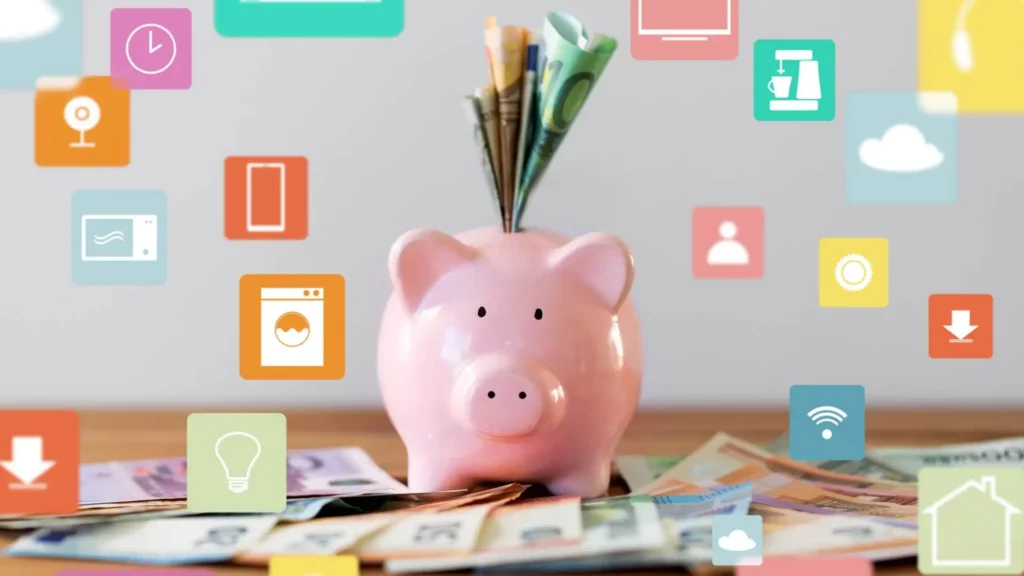Table of Contents
Moving to or staying on one paycheck for a household is a big shift. Whether it’s a deliberate choice (one parent stays home with kids), a life event (job loss, caregiving), or a temporary phase, living on a single income is possible with clear planning, honest conversations, and a few practical systems.
This guide gives 15 concrete, human-first tips that families can implement right away: budgeting strategies, income-stabilizing moves, lifestyle adjustments, emotional support, and safety-net hacks. I’ll also show how modern tools (like Beem’s Smart Wallet and Everdraft™) can quietly make the transition less stressful without becoming a crutch.
Why a single-income household can work and where the pressure comes from
A single income can bring benefits, simpler schedules, one parent more present, fewer commuting costs, but it also concentrates financial risk. Paychecks matter more, and timing gaps are more dangerous. The goal isn’t austerity. It’s designing a life that protects essentials, preserves joy, and builds flexibility.
Key trade-offs to accept up front:
- Prioritize stability over speed (slow, steady savings beats high-risk gambles).
- Replace comparison with values (what matters to your family may cost less than you think).
- Increase predictability: Automate what you can and have a plan for the unpredictable.
Now the tips.
Tip 1: Start with an honest, shared money conversation
Before spreadsheets, have a heart-to-heart. Talk about:
- Current monthly income (net), all recurring expenses, and immediate shortfalls.
- Values and priorities: Childcare, schooling, one big family ritual, a safety net.
- Fears and boundaries: What expenses are non-negotiable, where you’re willing to compromise.
Script to open the conversation:
“Let’s spend 30 minutes this week looking at our monthly money: what must get paid, what we want to keep, and one thing we can change to feel safer. No blame. Just info.”
This builds alignment and reduces resentment later.
Tip 2: Build a survival-first budget (then expand)
On a single income, start with essentials. Use a two-layer budget:
- Essentials (survive): Rent/mortgage, utilities, groceries, insurance, basic transport, minimum debt payments.
- Flex & growth: Buffer, small fun fund, debt extra payments, retirement.
If money is very tight, create a short-term “survival budget” covering essentials only for 30–90 days. That removes decision fatigue and buys space to figure out longer-term fixes.
Practical step: auto-pay essentials first (rent, utilities, groceries transfer). Anything left becomes discretionary.
Tip 3: Automate micro-savings and sinking funds
Automation is your friend, especially when time and attention are scarce.
- Set one automatic transfer each payday: even $10–$50 compounds.
- Build sinking funds for predictable expenses (car insurance, school fees) so they don’t blow your month.
- Use separate accounts (online savings) to avoid accidental spending.
If full automation feels risky, start with small, reversible transfers and scale up.
Tip 4: Create a realistic emergency buffer ASAP
A single missed paycheck has bigger consequences. Aim for:
- Short-term starter buffer: $500–$1,000 (first goal).
- Medium-term: 1–3 months of essentials.
- Long-term: 3–6 months when possible.
Tactics to build it: side gig revenue earmarked for a buffer, sell unused items, or redirect a seasonal bonus. Even small wins matter: replace anxiety with a growing number.
Tip 5: Optimize recurring bills, cut without pain
Recurring subscriptions and service plans quietly add up.
- Audit subscriptions quarterly; cancel or downgrade what you don’t use.
- Bundle or renegotiate cable/phone/internet plans. Call providers and ask for lower rates.
- Re-shop insurance (auto, home, life) each year; small percentage drops are real savings.
Two quick rules:
- If it’s refundable within a month, pause rather than cut permanently to test the change.
- Replace expensive routines with lower-cost rituals (special coffee at home once or twice a week).
Tip 6: Make groceries more efficient (without becoming miserable)
Food often offers the fastest, least painful wins.
- Meal plan around sales and cheap staples (rice, beans, eggs, seasonal produce).
- Batch-cook and freeze meals. Less food waste and cheaper per serving.
- Shop with a list and never when hungry.
- Use store pickup or curbside to avoid impulse buys.
Small habits, like buying a rotisserie chicken and turning it into multiple meals, free up meaningful cash.
Tip 7: Reduce housing and transport strain intelligently
Housing and transport are usually the biggest line items; even small changes help.
- Consider refinancing or consolidating mortgages when rates drop.
- If feasible, explore downsizing or renting out a spare room; the extra cash can cover childcare or the buffer.
- Carpool, combine trips, or use public transit where safe and practical. Regular maintenance prevents surprise repair bills.
Make choices that preserve the family’s quality of life without keeping you financially stretched.
Tip 8: Protect income with simple insurance and documentation
On one income, losing the earner’s pay is catastrophic.
- Keep up disability insurance and basic life insurance for the primary earner. Group policies through employers are often cheaper.
- Make sure documents are accessible: Pay stubs, tax returns, and insurance policies.
- Have a written plan: Who calls whom, which bills get paid first, and where cash lives in a crisis.
Prevention and paperwork reduce panic and speed recovery.
Tip 9: Bring in targeted side income (fast wins, low hours)
A single income doesn’t mean zero extra earnings. Look for fits with your schedule:
- Flexible micro-gigs: tutoring, weekend freelancing, delivering groceries, babysitting.
- Monetize skills: short freelance projects, part-time consulting, craft sales.
- Passive-ish: sell unused items, license photos, or create a simple digital product (printable planners, lesson guides).
Aim for a small, regular income that funds the buffer or reduces a debt, not another full-time job.
Tip 10: Use tools to lower risk and smooth cash flow
Modern financial tools reduce friction:
- Smart Wallets: auto-categorize spending, alert for upcoming bills, and nudge safe micro-savings. They make a single paycheck stretch further by removing surprises.
- Tactical advances: when timing gaps appear, a responsible short-term advance can prevent overdrafts and costly fees, used sparingly and repaid swiftly.
- Shared visibility: give partners shared access to budgeting tools so everyone sees the same numbers.
Beem example (subtle): Beem’s Smart Wallet organizes household spending, flags category pressure early, and suggests small, safe transfers to build a buffer. If an urgent, unavoidable expense appears, Everdraft™ can provide up to $1,000 quickly with no interest and no credit checks, useful for emergencies when the alternative is expensive fees. Always pair advances with a repayment plan.
Tip 11: Prioritize debt strategy: protect cash and lower interest
High-interest debt is a growth killer.
- Attack credit cards first when possible (avalanche) or use snowball for motivational wins.
- If monthly debt eats too much of the paycheck, consider consolidation or a lower-rate personal loan.
- Make minimum payments automatic to avoid late fees, and direct any side-income to higher-interest debt or the buffer.
Small extra payments can reduce the years of interest. Prioritize consistently.
Tip 12: Keep household routines simple and joyful
Lifestyle choices are not just about saving. They build stability.
- Batch tasks: grocery runs, bill pay, meal prep. Block time to reduce friction.
- Keep family rituals affordable: game night, park outings, or a monthly movie night at home.
- Encourage a household “one-in, one-out” rule for toys and purchases to curb clutter and cost.
Sustainable habits are the opposite of deprivation. Pick rituals you enjoy and can keep.
Tip 13: Teach kids money skills early (and make it collaborative)
Kids can help, and learning lasts.
- Age-appropriate chores with small allowances teach value. Make goals visible (chart or app).
- Let older kids manage a small category (school lunches, weekend treats) so they learn trade-offs.
- Celebrate learning wins: helping with finances builds confidence and responsibility.
Financial education reduces future shocks and makes the household approach shared.

Tip 14: Plan for big life events with sinking funds
Large events derail budgets if unplanned.
- Create sinking funds for predictable large costs: car replacement, holiday gifts, school fees, and summer camps.
- Fund these with small weekly transfers instead of one big shock.
- Prioritize the biggest known future expense first and then stack additional funds.
Sinking funds convert fear into a scheduled, manageable practice.
Tip 15: Protect the relationship: Money is emotional
Money strain often hits relationships first.
- Schedule short, regular check-ins (15–20 minutes) to review money, not longer lectures. Focus on facts, not blame.
- Acknowledge wins (buffer growth, a debt paid down) and accept small mistakes.
- Keep a tiny joint “fun” fund so life still has treats.
Emotional safety and financial safety go hand in hand.
Quick checklist: 10 actions to take this month
- Have a 30-minute household money chat.
- Set up one automated transfer to savings.
- List monthly essentials and mark non-essential subscriptions to cut.
- Build a $500 starter buffer goal and track progress.
- Schedule one bill- negotiation call (insurance, phone, internet).
- Start a sinking fund for the next big seasonal cost.
- Pick one side gig idea and list 3 next steps.
- Automate minimum debt payments.
- Invite kids into one small money task (age-appropriate).
- Enable spending alerts in your banking or Smart Wallet app.
Measuring progress: What to track
- Buffer size (absolute dollars): monthly goal tracked visually.
- Essentials ratio: essentials as % of income. Trending down is progress.
- Debt-to-income direction: Is debt principal falling month-over-month?
- Stress metric: subjective but ask monthly. “On scale of 1–10, how stressed about money?” If it drops, you’re winning.
Small, measurable wins compound into security.
Single-Income Family Priorities at a Glance
| Category | Goal | Practical Focus | Beem Smart Move |
| Essentials | Cover 100% of mandatory costs reliably | Automate rent, utilities, and debt minimums | Use Beem’s bill alerts to avoid missed payments |
| Savings Buffer | Build $1,000 starter fund → 3–6 months of expenses | Auto-transfer small amounts weekly | Smart Wallet nudges small, safe savings transfers |
| Debt Control | Reduce high-interest balances first | Use the avalanche or snowball method | Track progress and get spending insights by category |
| Income Stability | Create small secondary income streams | Freelance, side gigs, or seasonal work | Use Smart Wallet categories to separate side income |
| Emergency Gaps | Handle timing gaps without costly loans | Use short-term advances responsibly | Everdraft™ gives up to $1,000 with no interest or credit checks |
| Emotional Health | Keep money talks short and solution-focused | 15-min monthly check-ins | Shared Smart Wallet visibility fosters transparency |
Thriving, Not Just Surviving: Redefining Success on One Income
Living on a single income isn’t about restriction; it’s about intentional living. The most successful single-income families aren’t necessarily earning more; they’re deciding better. They trade impulse for planning, chaos for clarity, and short-term panic for long-term peace.
What makes the difference isn’t just budgeting; it’s systems that reduce stress: automation that protects your essentials, habits that stretch every dollar, and safety nets that keep small setbacks from becoming crises.
Apps like Beem can help simplify that balance. The app’s Smart Wallet gives real-time clarity on spending and upcoming bills, while Everdraft™ serves as a tactical fallback for urgent needs, so you stay focused on your bigger goals without derailing progress.
In the end, it’s not about living smaller. It’s about living smarter, together. Start small, stay consistent, and remind yourself often: Financial peace isn’t about how much you make; it’s about how well your family moves in sync.
FAQs About Living on a Single Income
How long does it take to feel financially stable on a single income?
It depends on starting circumstances, debt level, and income flexibility. Many families feel materially safer after building a $1,000 starter buffer (4–6 weeks with aggressive moves) and emotionally steadier after 3–6 months of consistent automation. Long-term stability (3–6 months of essentials saved) often takes a year or more, but steady small wins accelerate progress.
Should the non-working partner do paid work if the family is struggling?
If feasible and wanted, part-time or flexible income can be a huge help, but it’s a personal trade-off. Consider childcare costs, burnout risk, and the quality of work available. Micro-gigs, remote freelance tasks, or seasonal work often balance income with family time better than a full-time return right away.
When is it appropriate to use an instant cash advance like Everdraft™?
Use instant advances only for urgent, unavoidable expenses where alternatives (emergency fund, asking family, rearranging due dates) aren’t possible. For example, sudden major car repairs that prevent work or urgent medical bills. Treat cash advances as short-term bridges: repay them on a clear schedule and rebuild your buffer immediately afterward.















































